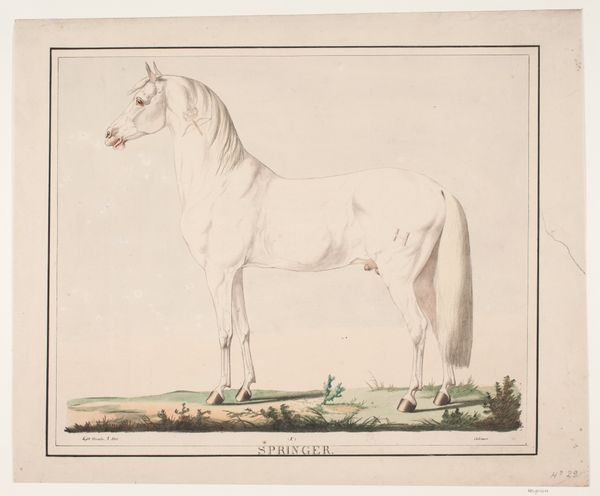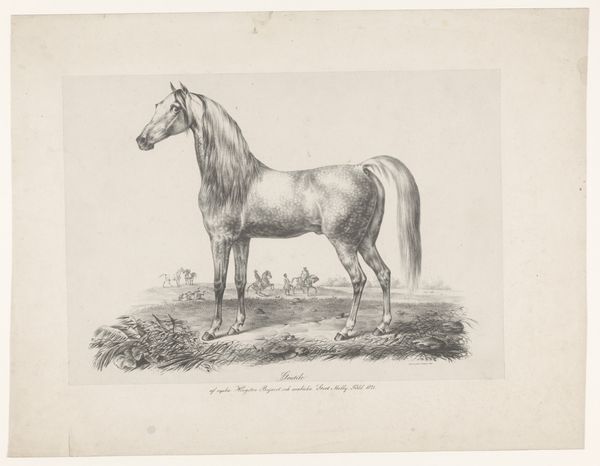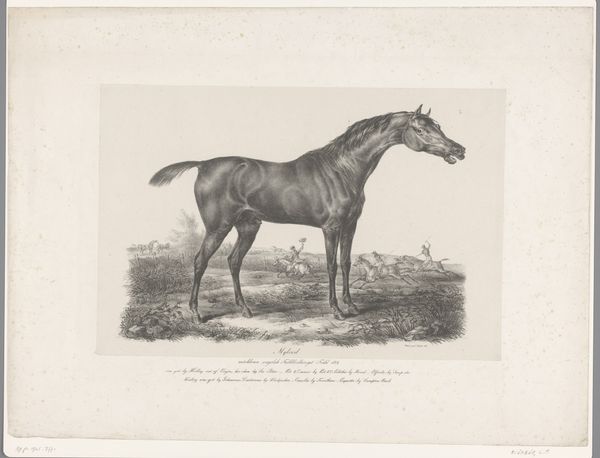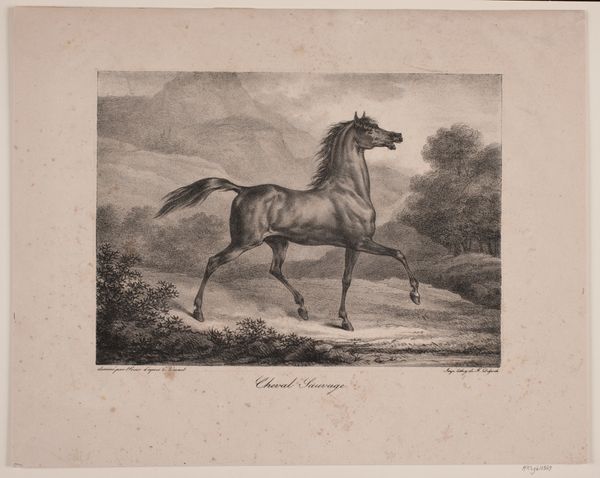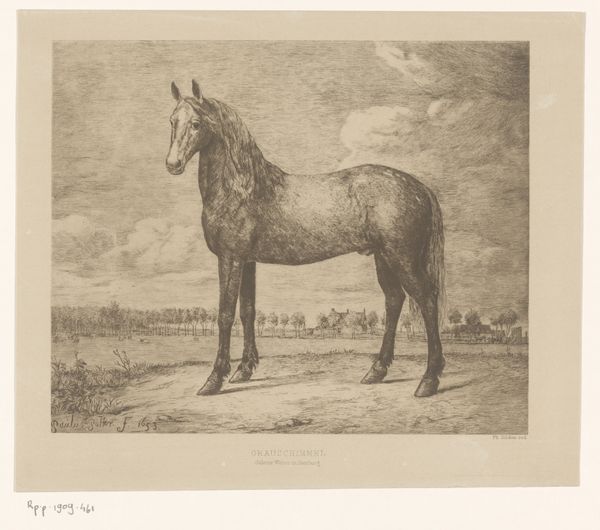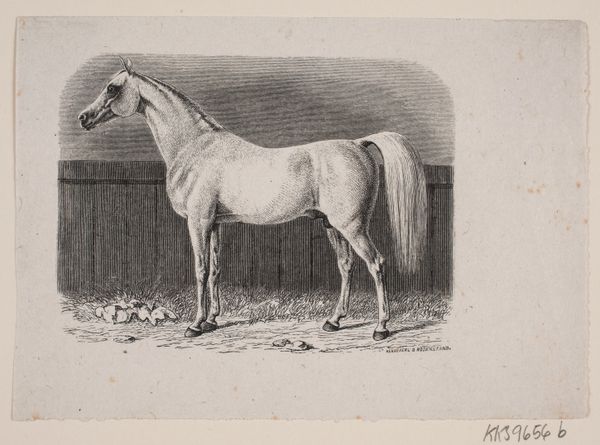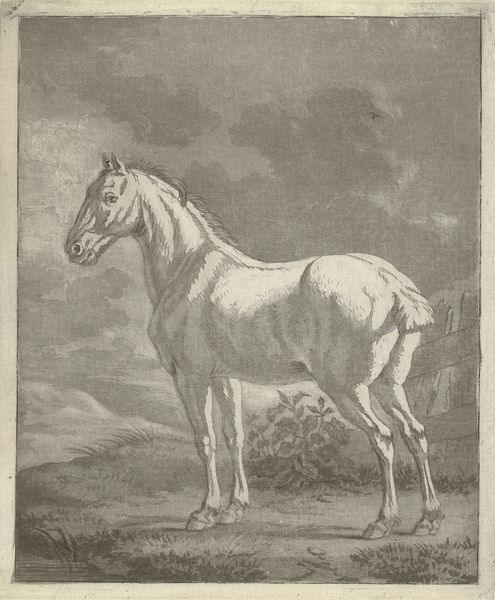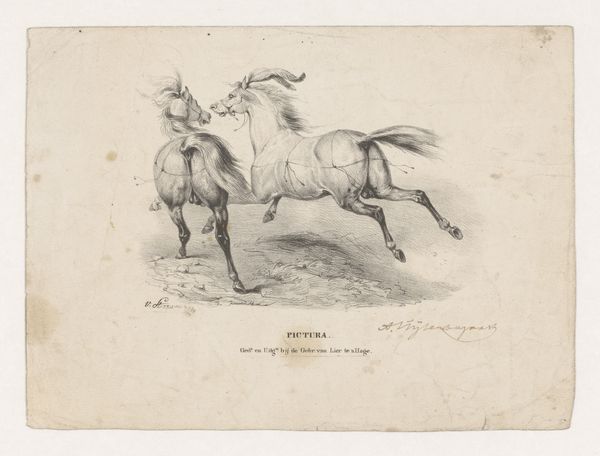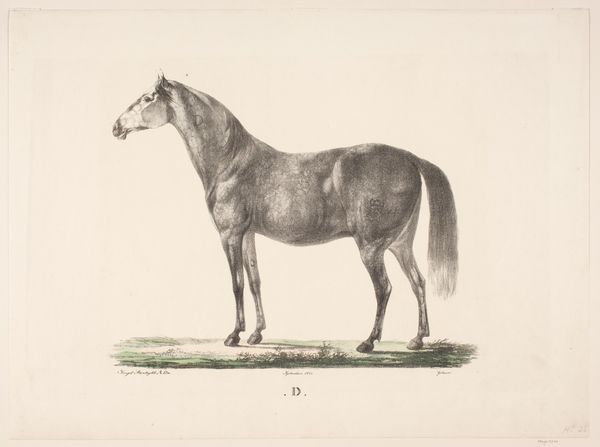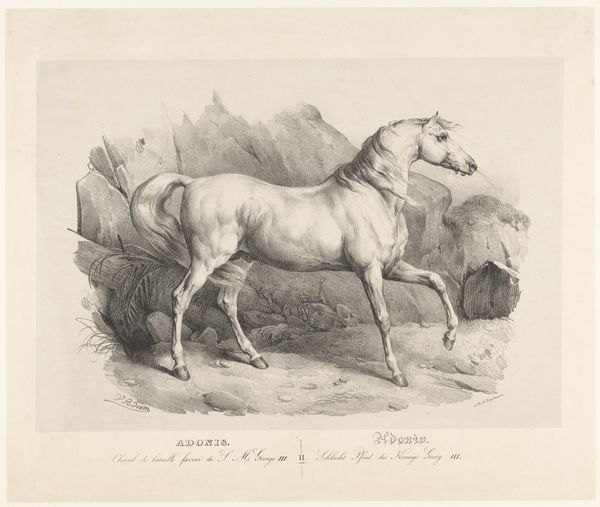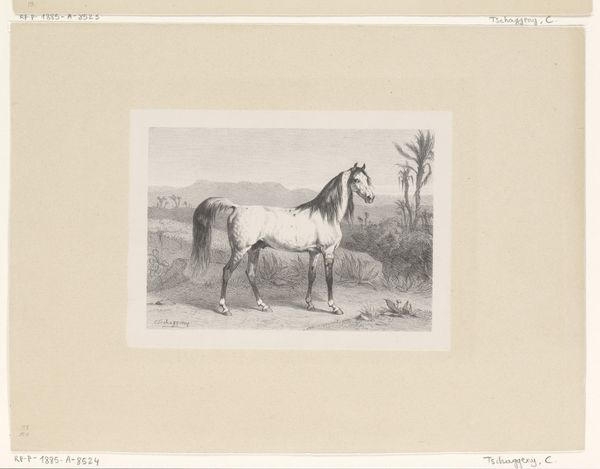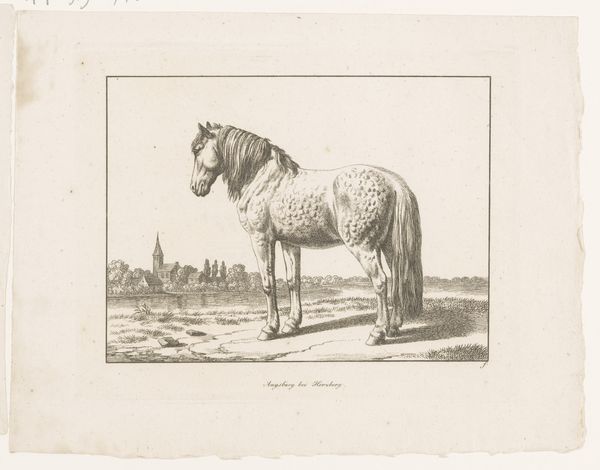
drawing, lithograph, print
#
portrait
#
drawing
#
animal
#
lithograph
# print
#
pencil drawing
Dimensions: 274 mm (height) x 355 mm (width) (bladmaal), 191 mm (height) x 264 mm (width) (billedmaal)
Editor: This is "Arabisk hest: 'Le Néron'," made sometime between 1723 and 1823, and housed at the SMK. It’s a lithograph by Wilhelm Heuer. It's such a striking portrait; the horse seems very carefully rendered. What stands out to you when you look at this piece? Curator: Immediately, I see the interplay of control and freedom symbolized by the horse itself. In many cultures, the horse represents nobility, power, and untamed nature, yet here, it's carefully positioned within a landscape, almost posed. How do you think this tension plays out in the context of the time it was made? Editor: Well, given the timeframe, perhaps it speaks to a societal fascination with both controlling and appreciating the natural world? Curator: Precisely. Consider too the specific breed, an Arab. The Arabian horse is laden with symbolic meaning, connoting status, speed, and even exoticism in European eyes. What emotions or ideas are evoked by the breed, especially back then? Editor: I see what you mean. It’s not just *any* horse, it’s an Arabian, bringing in a whole host of other cultural associations of the ‘Orient’ at the time, and how Europe related to it. Curator: Exactly! The "Orient" as it was termed was filtered through a lens of romanticism and colonial ambition. Notice how the light catches the horse's coat and the soft rendering of the background. It creates a sense of idyllic harmony, obscuring more complex geopolitical realities. It prompts the questions: who is served by this aesthetic, and whose story is omitted? Editor: That’s a side of it I hadn’t fully considered. It is more complex than just a pretty picture of a horse! Curator: It often is! By examining the symbols and their cultural weight, we can unveil hidden narratives and better understand how the past continues to shape our present. Editor: Definitely! I'll be looking at portraits a bit differently from now on.
Comments
No comments
Be the first to comment and join the conversation on the ultimate creative platform.
